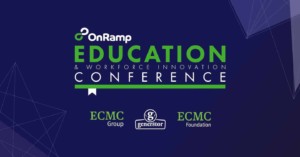Education in the Innovation Economy

By John Eger
The world has undergone dramatic changes due to the spread of the Internet, the marriage of computers and telecommunication, and the shift to a global economy. What we do in the next few years to reinvent our civilization, our political, social and economic institutions, and, importantly, our schools to meet the challenges of this new economy will determine whether we survive and succeed.
The new economy represents a paradigm shift from manufacturing and service provision to technology and innovation. In the wake of the basic changes, business and industry and the non-profit sector are dependent upon an economic system that rewards creativity and innovation.
In our schools, we are finally discovering that the path to success in the Internet economy, is found in the marriage of the arts and hard sciences, a truly interdisciplinary education.
Not surprisingly, the arts–all the arts–are the magic bullet to learning STEM (science, technology, engineering and math). Fortunately, more schools are figuring out how to marry the two, using “design thinking” (which teaches people how to think) and “project-based learning” (which provides real-world experiences). Learning how to learn and learning how to be creative are vital skills.
U.S. News and World Report reported that “when you ask employers at huge corporations and technology companies what they need in their new employees, they want people who can communicate and learn quickly outside of their comfort zone, both traits fostered better by an arts education than a solely technical degree.”
And Fast Company Magazine also reported that many tech CEOs actually prefer employees with liberal arts degrees, as “the liberal arts train students to thrive in subjectivity and ambiguity, a necessary skill in the tech world where few things are black and white.”
Sure, people are scared that machines may someday reduce the size of the workforce and require a different skill set.
This is not a new concern. According to the MIT Technology Review we are witnessing, “Tectonic Shifts in Employment (where) information technology is reducing the need for certain jobs faster than new ones are being created.”
In The Second Machine Age, Erik Brynjolfsson, director of the Center for Digital Business at MIT’s Sloan School of Management and Andrew McAfee, its principal research scientist, concluded that “nearly half of all jobs are vulnerable to machines — to applications using information technology.”
While the new jobs, the jobs we haven’t yet identified, all require new thinking skills, the skill most in demand (according to the Conference Board, a think tank for global business) is creativity. Arts-based learning helps.
The National Science Teacher Association (NSTA), in a report released over five years ago, said: “Teachers of science, technology, engineering, and mathematics (STEM) are discovering that by adding an “A”— the arts — to STEM, learning will pick up STEAM. Students remember science learning situations that contain multisensory, hands-on activities or experiments, which the arts can bring to science lessons.”
Edutopia found that “arts integration has been shown by several rigorous studies to increase student engagement and achievement among youth from both low and high socioeconomic backgrounds.” If the integration is truly across disciplines, forging the arts and sciences together, STEAM or arts-based learning, our students will find themselves prepared for tomorrow’s world. They will possess the new thinking skills, the creativity the innovation economy demands.
For more, see:
- Philadelphia is Reimagining Arts & Creativity Education Programming
- The Future of Learning Is…
- At The Intersection of Creativity and Critical Thinking
John Eger is Director of the Creative Economy Initiative and Zahn Professor of Creativity and Innovation at San Diego State University (SDSU). Connect with him on Twitter: @jeger62
Stay in-the-know with all things EdTech and innovations in learning by signing up to receive the weekly Smart Update.




0 Comments
Leave a Comment
Your email address will not be published. All fields are required.